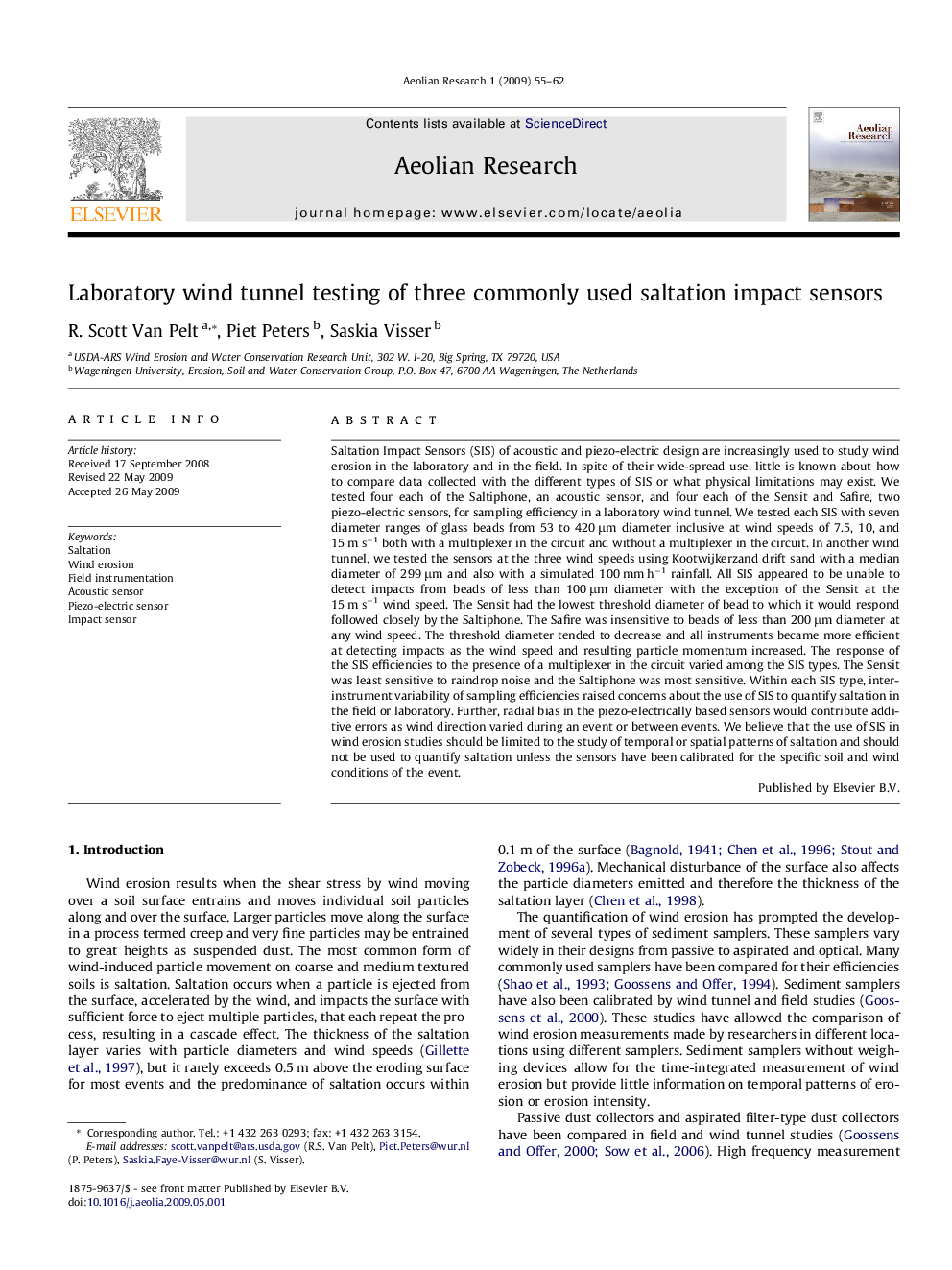| Article ID | Journal | Published Year | Pages | File Type |
|---|---|---|---|---|
| 4673920 | Aeolian Research | 2009 | 8 Pages |
Saltation Impact Sensors (SIS) of acoustic and piezo-electric design are increasingly used to study wind erosion in the laboratory and in the field. In spite of their wide-spread use, little is known about how to compare data collected with the different types of SIS or what physical limitations may exist. We tested four each of the Saltiphone, an acoustic sensor, and four each of the Sensit and Safire, two piezo-electric sensors, for sampling efficiency in a laboratory wind tunnel. We tested each SIS with seven diameter ranges of glass beads from 53 to 420 μm diameter inclusive at wind speeds of 7.5, 10, and 15 m s−1 both with a multiplexer in the circuit and without a multiplexer in the circuit. In another wind tunnel, we tested the sensors at the three wind speeds using Kootwijkerzand drift sand with a median diameter of 299 μm and also with a simulated 100 mm h−1 rainfall. All SIS appeared to be unable to detect impacts from beads of less than 100 μm diameter with the exception of the Sensit at the 15 m s−1 wind speed. The Sensit had the lowest threshold diameter of bead to which it would respond followed closely by the Saltiphone. The Safire was insensitive to beads of less than 200 μm diameter at any wind speed. The threshold diameter tended to decrease and all instruments became more efficient at detecting impacts as the wind speed and resulting particle momentum increased. The response of the SIS efficiencies to the presence of a multiplexer in the circuit varied among the SIS types. The Sensit was least sensitive to raindrop noise and the Saltiphone was most sensitive. Within each SIS type, inter-instrument variability of sampling efficiencies raised concerns about the use of SIS to quantify saltation in the field or laboratory. Further, radial bias in the piezo-electrically based sensors would contribute additive errors as wind direction varied during an event or between events. We believe that the use of SIS in wind erosion studies should be limited to the study of temporal or spatial patterns of saltation and should not be used to quantify saltation unless the sensors have been calibrated for the specific soil and wind conditions of the event.
